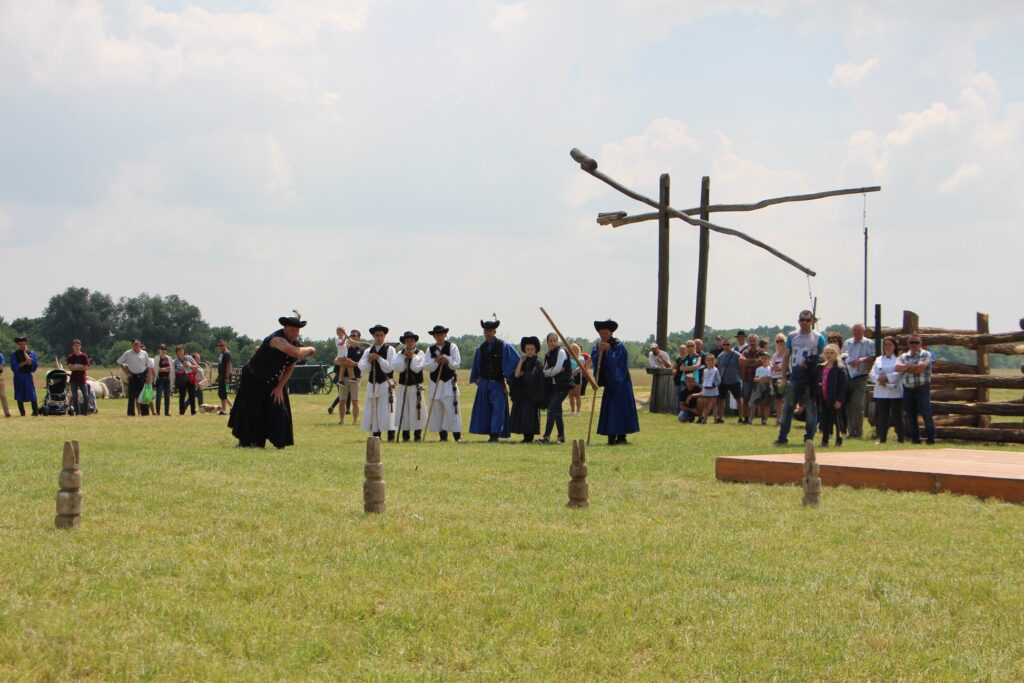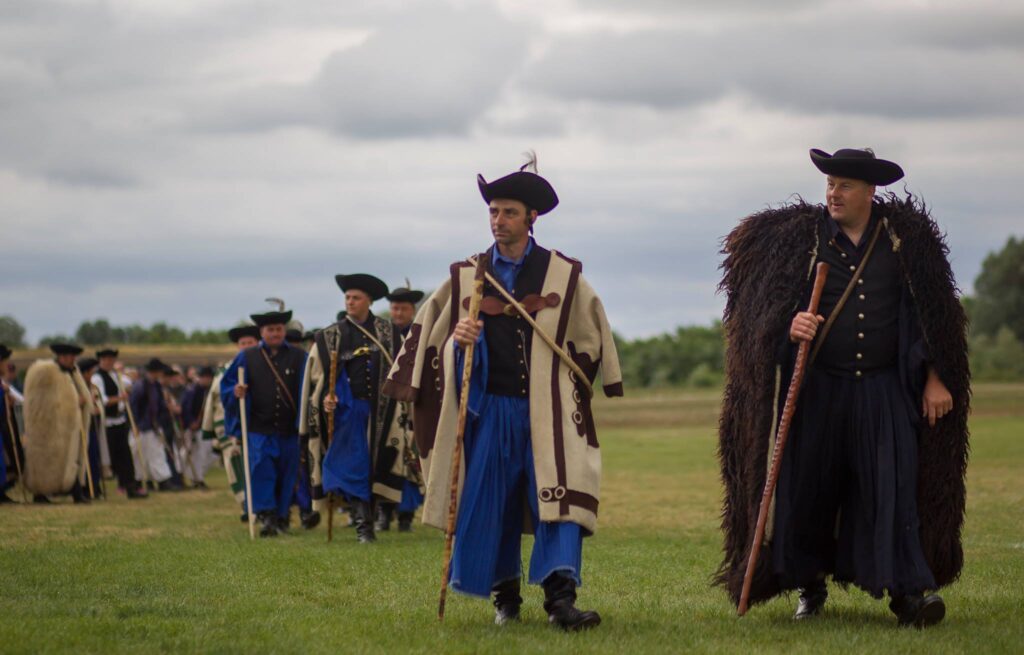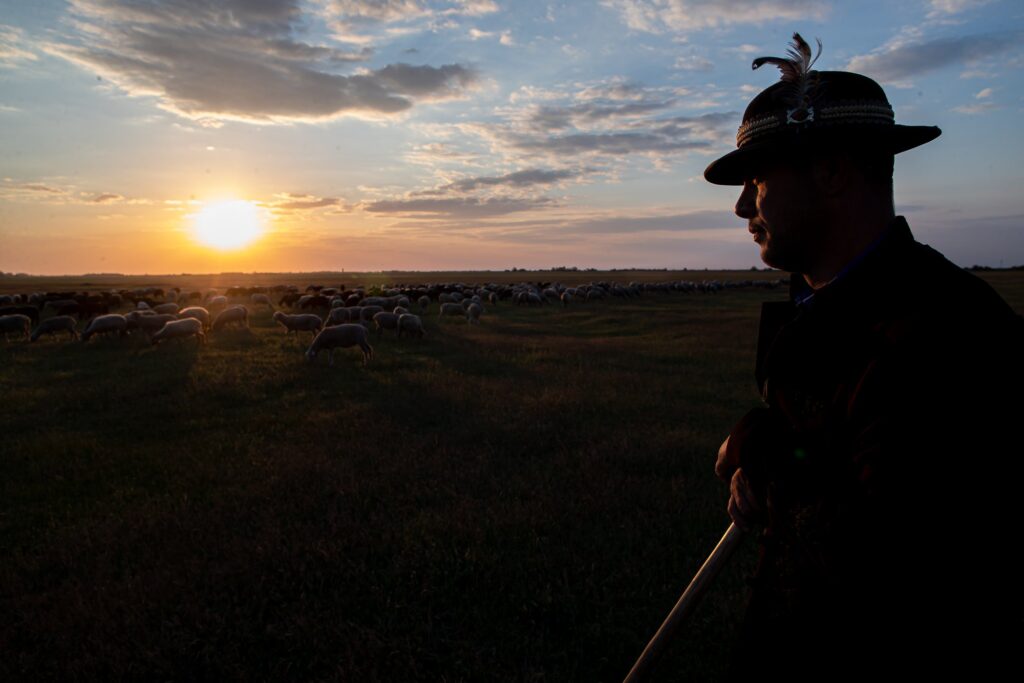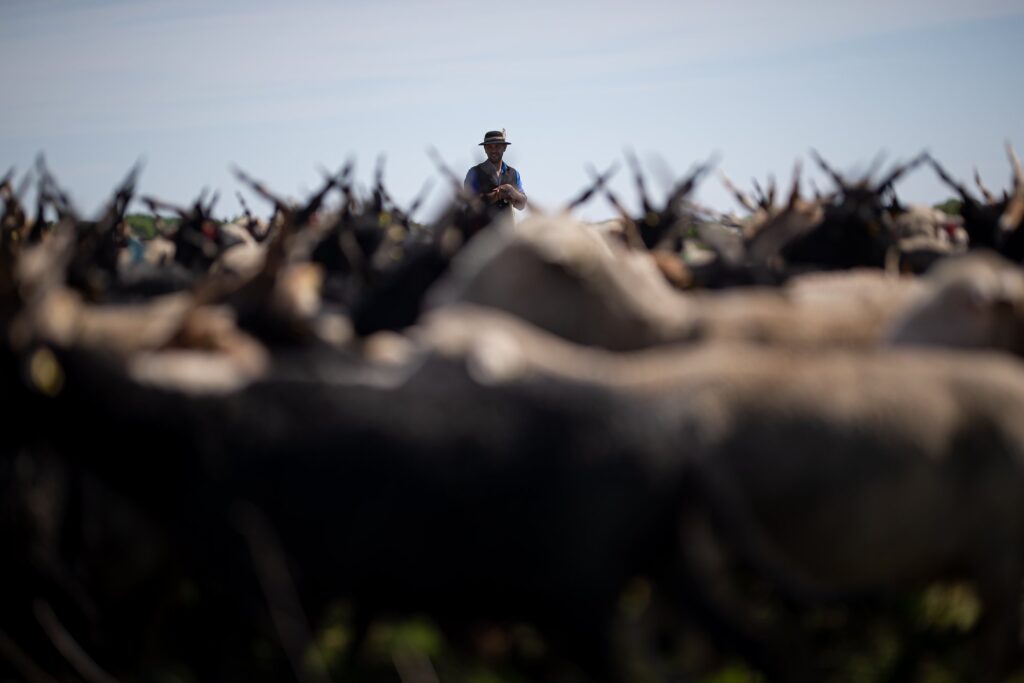This year, for the 24th time, one of the most spectacular traditional events of Hortobágy, the National Goulash Competition, and Shepherd Meeting, will be held on September 19th. The aim of the event is to present the long-held traditions that remain in this unique environment. Traditions of the Shepherd, herdsmanship, and the famous grey cattle among other species that they manage, as well as he preparation of Hungary’s national dish.
Competitions are held with the participants coming from far and wide, right across Hungary, individuals representing the youth of their settlements compete with each other to prove their craftsmanship and skill. The main competitions – which are related to the daily work of the shepherds – are water fetching, – pulling from a boom well, animal counting, during which the number of animals crossing the bridge must be estimated as accurately as possible, catching, and are judged on their clothing as well.

The shepherds of Hortobágy are a defining part of the traditional layer of society, which in the ethnographic literature it calls the “shepherd order”. The shepherds were the forebearers and were the lifeblood of a characteristic culture far older than what is defined as “the peasants”, which existed until the middle of the century.
In the Middle Ages, Debrecen was a market town of private landlords, with many privileges, e.g. it also had the right to fish in the Máta pasture and the Hortobágy. Then, when the city was granted the free royal city privilege in 1619, it also acquired the pastures in the Hortobágy area. From then on, the town and its host society settled for the use of the pastures. The Hortobágy steppe grazing order and its special pastoral society are formed by the 16th century.

There was a hierarchical order in the society of shepherds. The accountant (in the case of sheep, the bacsu), who is responsible for the stock of goods entrusted to him with his property, is the most prestigious, his commanders he commands, his word decides. This is followed by the account or old boy. The boyars are young, unmarried people of nobility, still facing military service. The young boys remained on the homestead until they became of age. This ranking was also expressed in wages.
The rank of the shepherds was also determined by where he served. The pastor of Hortobágy was considered the most prestigious because “the real pastor serves the city of Debrecen”. The others in the rankings only follow, with the village herd and barn at the lowest level.

In the society of shepherds, in terms of authority and rank, it even mattered which kind of cattle he kept. Most were kept guardians of valuable large animals (horses, cattle). There is little shade difference between a foal and a cow. The foal is highlighted by its neck and pride, the fact that the horse is a high-value animal, agile but easily injured, and its herding requires a tried-and-tested man. With such endowments, the foal – understandably – had a nimbus in the wilderness. But those caring for cattle were not considered inferior because they also rode a horse, and the cattle were also valuable animals. In Hortobágy, “goulash animals” were in great demand. Sometimes the herders of “goulash animals” also guarded horses along with the cattle.
János Háry of the shepherds was a great narrator. He said that in addition to sheep (if not milked), you have time to make art. They excel in the art of the shepherd. They are the ones from whom several shepherds were able to make a decent fortune. Keeping a pig on pasture in winter and summer was put to the test. “A shepherd doomed to solitude who had neither the opportunity to socialize nor to cipher”.

Further curiosities about the shepherds of Hortobágy: https://www.hnp.hu/hu/szervezet-egyseg/turizmus/oldal/a-pusztai-legelteto-allattartas
Photos: Hortobágyi Nonprofit Kft., István Derencsényi